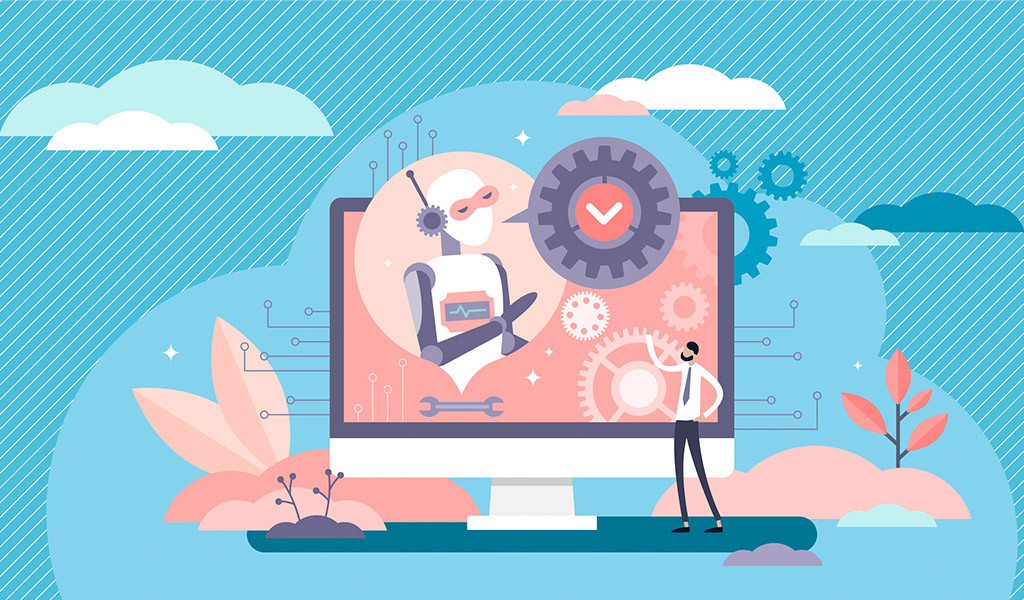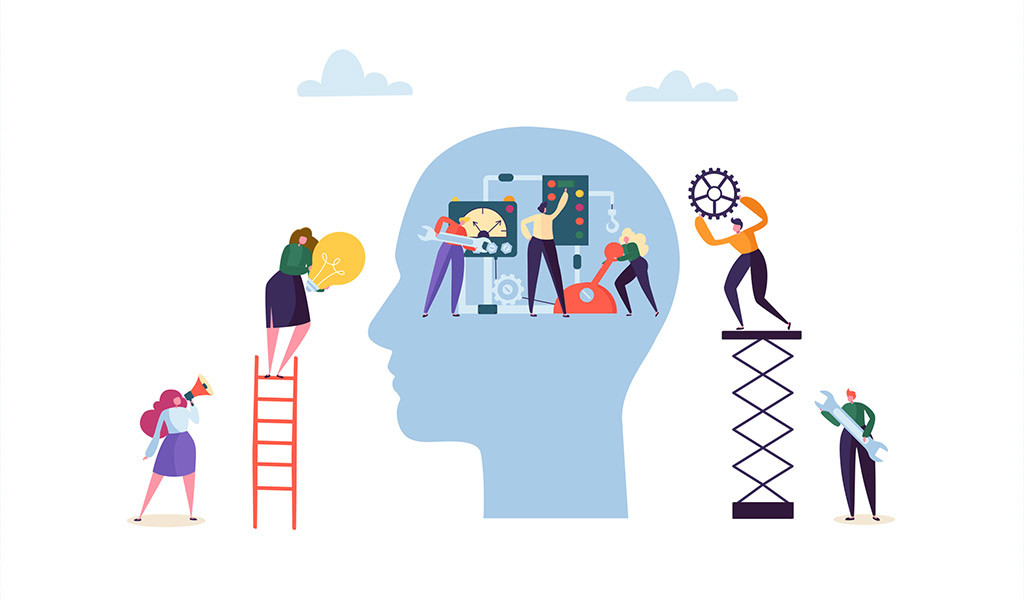
If you’re not focusing on customer experience, then you should be. Here are some statistics that you should pay attention to if you’re still unsure where you should land on this topic:
- According to Gartner, when it comes to making a purchase, 65% of people find customer experience more important than price.
- According to Temkin Group, a moderate increase in Customer Experience generates an average revenue increase of $823 million over three years for a company with $1 billion in annual revenues.
- According to Forrester, 72% of businesses say improving customer experience is their top priority.
- Again, according to Temkin Group, 73% of companies with “above average” Customer Experience maturity perform better financially than their competitors.
We could go on, but you get the picture; customer experience is a top priority for businesses because happy customers spend more money and stay loyal to your company. But how do you go about improving customer experience in the digital age? You use digital solutions. Today we’re going to be looking at how AI and automation are leading to customer experience success for organizations around the world.
How AI and Automation Impact Customer Experience
Curation of Personalized Content
Personalization is an extremely important tool for businesses in the modern world. In fact, marketers report seeing an average increase in sales of 20% when using personalized experiences. Additionally, 59% of consumers say that personalization influences their shopping decisions.
To create personalized content, brands combine consumer data and AI to deliver personalized messaging, products, and experiences to consumers. If you spend much time on the internet, then you’ve experienced personalized marketing at some point. You search Google for something, and then suddenly all of your ads relate to similar products. Amazon is one company that has had huge success with this advertising method. Amazon will advertise products to you based on your searches, it will recommend products that other customers have bought if they have a similar profile or purchase history to you, and it will recommend new products based on your interests. Amazon claims that around 35% of its sales come from these personalized recommendations. This demonstrates that when the algorithm gets it right, customers are happy to engage with it and buy more products. People like personalized experiences and they like to get the most out of the products they buy, so this tactic improves the customer experience. According to one report, 56% of online shoppers are more likely to return to a site that recommends products.
However, some personalized advertising algorithms are more intelligent than others, and if they miss the mark, the customer may have a more negative experience. Some algorithms work by suggesting products that you have shown interest in (Googled) or have bought previously. This is great for products you buy frequently like makeup, toiletries, cleaning products, or even clothes. However, it can become annoying for consumers if they are continually advertised products that they only buy very infrequently, like mattresses, cupboards, or furniture. As AI advances, we should see less and less of this.
Google and Facebook also use AI to deliver personalized experiences within their search functions. If you Google a phrase, the search engine will now use artificial intelligence to work out exactly what you mean and your intentions by Googling that phrase. It will then deliver the most relevant results in a matter of seconds. Facebook’s search function works similarly. For example, let’s say you want to find “Mike Jones”, so you enter his name into Facebook’s search field. Facebook will use the information on your profile and other data to order the search results based on relevance. If you live in New York and used to work at a company called Flintax, they will be more likely to show you a Mike Jones who also lives in New York and also worked at Flintax, rather than a Mike Jones from Wales, UK. This provides a much better experience for the customer because it saves them countless hours of searching through results and becoming frustrated.
AI and Automation for personalized content isn’t just for large companies. We are seeing an increasing number of smaller companies use the data they collect to run successful AI and automation personalized marketing. For example, you could send personalized emails to customers that include product suggestions based on the products they have bought from you previously. This adds more value for the customer, will drive up your sales, and the whole process can be automated with ease.

Providing an Improved Customer Service Experience
There’s been a lot of buzz around AI-powered customer service in recent years, and with good reason. AI-powered customer service solutions are finally viable in a way they weren’t a decade ago. We now have powerful AI that can intelligently crunch data and make the best decision in a matter of seconds. 2019 research by Salesforce found that the use of “AI by customer service teams will increase 143% by 2020”. We’re too early in 2020 to tell whether this prediction has been met, but it’s clear that AI is on the rise and showing no signs of slowing down. Here are some ways AI is being used in this space.
- Predictive intelligence. AI can be used to identify customers who are at risk of taking their money to another company. The AI will then suggest special retention offers or other next steps to encourage the customer to stay.
- Targeting potential customers. If you know who your potential customers are, then you can turn them into customers with personalized marketing and targeted communications. This is what Harley Davidson is now doing with their AI program called Albert. The AI uses algorithms to find high-value potential customers who are ready to make a purchase. It then sends this information to the sales team so they can target these customers individually.
- Proactively solving problems. We now have AI that can monitor several sources of data, such as Twitter feeds, customer service tickets, and call logs to look for patterns. There may be a common problem emerging for customers that the business as a whole is not yet aware of. The AI will catch this so that the company can respond promptly and quickly start working on a solution.
- Intelligent call routing in customer service calls. Customers hate being put on hold and they hate having to repeat their information multiple times. This creates friction in the customer service process and leaves customers frustrated and more likely to report a poor customer experience. With today’s technology, there’s no reason why a customer should have to repeat the same information multiple times. The information should follow the customer through the customer service process. Customers should also be put through to the most appropriate agent straight away. Chatbots are great at doing this. They can ask the customer some basic questions to find out what category their issue falls in to. Sometimes the issue can be solved by the chatbot if it’s something simple, but if it can’t, the chatbot can route the customer through to the appropriate team or agent.
- Customer service surveys can be automatically sent out. This is a simple use of automation, but still very valuable. You can’t know how to improve your communications with customers if you don’t truly know how they feel. A survey is a great way to find out how your customers feel about your customer service team. When it comes to surveys, it’s important to ask the right questions and allow the customer to expand on certain points where appropriate. A multiple-choice survey may be easier to handle from a data perspective, but there are times when it can provide significantly less value.
- Self Service. As we just briefly touched on, there are times when there’s no need for a customer to speak to an agent at all. They might have a simple problem with their bill, an error in their information, need to update their address, or something similar. These activities have a quick fix that is easily automated. It’s not a good use of a customer’s time or an agent’s time to connect them. Instead, a chatbot is much more appropriate, as long as it functions well at its job. This means customers can get instant responses to simple questions, and that agents are freed up to deal with more complex issues.
- 24/7 Support. AI and Automation have made it significantly easier for companies to provide 24/7 support for their customers. Customers want businesses to be available whenever they are available, and this means limited hours customer service is no longer viable in the modern world. However, 24/7 customer support doesn’t mean you have to function at the same capacity around the clock. You could use chatbots to take some pressure off the reduced customer service agent operation during off-peak hours. You can also use AI to schedule calls for customers who have attempted to contact the company when no agents were available. AI customer service agents also have distinct benefits over human agents in some areas. They don’t get tired, they are never unhappy, they don’t need to take breaks, they don’t leave the company, and they’re never unsatisfied with their career progression. Customer service is still an area that has a high turnover rate due to the stressful nature of the job, among other factors. By using AI-powered customer service agents, you can solve a lot of these problems.

The Future of AI in Shaping the Customer Experience
There are lots of exciting things happening in the AI space, and we’re not too far away from a future with completely seamless interactions between customers and companies. Amazon Alexa has been dominating in the seamless and frictionless customer interaction space. Many companies now allow customers to use Alexa to schedule bills, book appointments, buy tickets, renew subscriptions, and so on, all with their voice. This improves the customer experience because it calls for significantly less effort from the customer, making the process more seamless and less of a chore.
As we move into the future, we can expect to see more examples of this type of seamless AI interaction. Customers will be able to communicate with companies according to their communication preferences, and the message will always get through to the right team. The message will also be captured, stored, and used by AI to gain deep insights about customers and their experience. These insights will then be used to create actionable goals to improve customer experience.
AI and automation are getting us to this point. It used to be that lots of customer data were fractured across different teams and different software, leading to a situation where there wasn’t a complete view of the customer. Some companies still function like this, and it ultimately means that they aren’t performing at the level they should be. There’s lots of potential for customer experience growth that can be unlocked with automation and AI.